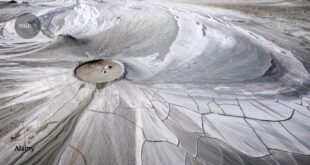- There is nothing extraordinary about this. But the house is located on a site that was possibly a part of the historic fort built by the Marathas.
- “No one at the school tells us about the importance of the fort or the town,” says the girl, who seems to have a faint idea of her town’s history.
- In the words of Cotsford, a British officer, the fort was a place “which gave us [the British] India”. This was how The Hindu wrote in its edition dated February 19, 1967.
Course of history changed
- The reference was to the famous Battle of Wandiwash (sometimes called Wandewash, all Anglicised versions of Vandavasi) of January 1760.
- It was at Vandavasi (about 120 km from Chennai in the present- day Tiruvannamalai district) that the British defeated the French.
- Talking of the importance of the battle, the article, published by this newspaper 55 years ago, says, “If it was Plassey in the North, in the South it was Wandewash that changed the course of Indian history, that paved the way for laying the foundation of the British domination exterminating the French out of the scene.”
- Marimuthu, author of the Tamil book, Vandavasi-Porum Varalarum (Vandavasi-War and History), emphasises that “not only the Battle of Plassey but also the Battle of Vandavasi is an epoch-making battle in the history of India.”
- The fort, said to belong to the 16th-17th Century CE, and the Battle present typical examples of “ifs” of history to those who speculate on the perverse course of events.
- The Battle of Wandiwash was, in a sense, a confrontation between Thomas-Arthur, Comte de Lally (1702-1766), who led the French, and Eyre Coote (1726-1783), who headed the British.
- The victory in Vandavasi was one of the successes of Coote who went on to defeat Hyder Ali of Mysore (1722-1782) in June 1781 at Parangipettai (Porto Novo). But Lally’s military career came to an end.
- He surrendered himself to the British in January 1761. Subsequently, he was convicted in his home country for treason and beheaded. Today, the fort is in a shambles with vegetation all around.
- Most of the site has been encroached upon. No one would believe that the fort premises were originally spread over 2.6 hectares (or about 6.4 acres).
- Some portions of the walls were as high as 18 feet; but, now, one can easily scale them at one or two points and even spot a moat.
- At the south-western corner of the fort is a cannon kept with a notice giving a brief account of the place. The cannon, used during the battle, is adjacent to the BakthaAnjaneyar temple, which forms part of the fort.
- A large number of houses, apparently occupied by poor families, have cropped up on the premises. A couple of buildings catch the eye.
- Encroachment continues unabated, if one goes by officials of the Tamil Nadu Department of Archaeology.
- Describing the battle as a culmination of the fight between two foreign powers, A. Karunanandan, former professor and head of the department of history, Vivekananda College, Chennai, says it paved the way for vanquishing the native powers.
- (Traditionally, the rulers of sloppy land, including the Vandavasi-Arni-Tiruvannamalai belt, refused to be cowed down by bigger rulers.) A direct fallout of the battle was that the British ushered in greater economic activity in the area, an important trade route.
A place for Jains
- Pointing out that Vandavasi is important for other reasons too, Dr.Marimuthu says the population of Jains is more in this area than in the rest of the State.
- According to an estimate, there are 59 sacred places in the State for the Jains, of which 28 are in Tiruvannamalai district, mostly in and around Vandavasi. As far as the local economy is concerned, mat-weaving sustains many families here.
- The remains of the fort had a makeover in early 2010 at the time of the 250th anniversary of the battle.
- Officials of the Department of Archaeology say they will clean the site. And if this happens, the fort will be more visible on the tourism circuit.
SOURCE: THE HINDU, THE ECONOMIC TIMES, PIB
 Chinmaya IAS Academy – Current Affairs Chinmaya IAS Academy – Current Affairs
Chinmaya IAS Academy – Current Affairs Chinmaya IAS Academy – Current Affairs



